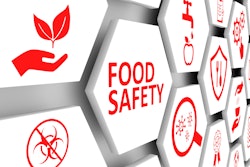
Disruptions to global supply chains are causing shortages in goods and products, from microchips to toaster ovens. But fewer are aware that these shortages also affect a commodity critical to the health and well-being of the entire population – food.
Livestock feed, for example, depends on an amino acid called lysine primarily made in China. Disruptions to the global supply chain caused by shipping constraints and production restrictions, including COVID-19 lockdowns, have caused a shortage that has sent prices soaring.
All of these factors have contributed to higher prices of pork, chicken, dairy products and eggs – even cat food and aquaculture products – and consumers are now faced with unrelenting sticker shock as prices continue to rise.
As a leader in both the innovative technology and the raw material needed to produce these amino acids sustainably and at scale, the United States is uniquely poised to reshore crucial supply chains to strengthen food security. But this aptitude must be met by political will. Fortifying food security can only be truly accomplished by supporting U.S. manufacturers in onshoring production and prioritizing long-term investment in capital infrastructure at home.
The essential role of amino acids in feeding the population
Livestock diets are supplemented with amino acids to make them healthier. Crude animal feed products - typically made from agricultural residues - are deficient in essential amino acids that allow it to make complete proteins. When their diet is supplemented with amino acids, animals have more muscle mass and a stronger immune system. They also grow faster or, in the case of a chicken or dairy cow, lay more eggs or produce more milk.
With lysine production dominated by China, which controls more than 65% of the market, the United States is dependent on an overseas supply of this key ingredient. This dependence is only set to grow: China’s recent release of a 5-year bioeconomic plan about accelerating investment in the biological agriculture industry includes rapid development of feed amino acids.
Economists warn China’s growing control of the amino acid market could destroy close to 30,000 jobs, reducing domestic economic activity by billions. As a result, the United States is at increasing vulnerability to supply chain disruptions and market manipulation by the Chinese.
Meanwhile, the shortage has sent farmers scrambling for remedies. The most common is to use soybean meal as a substitute, which in addition to being less healthy, is typically more expensive, which worsens the food security problem by adding to production costs. Moreover, increased demand due to the lysine shortage is pushing soybean meal prices even higher.
The reformulation of feedstock also poses an environmental threat. While soybean meal is rich in protein, it lacks the proper balance of amino acids. If an animal gets too much protein – as it does when soybean meal is substituted for lysine – the excess passes through its body as nitrogen, which can leach into waterways triggering algal blooms, in turn starving these water zones of oxygen and adversely impacting marine populations.
Other solutions to address the lysine shortage include substituting liquid lysine and conserving lysine, which come with their own set of challenges. While dry lysine is more expensive to ship than liquid lysine and not as stable, conserving lysine only decreases productivity, as target animal growth and production rates are affected.
But these are just stopgap measures.
The only long-term solution to supply chain challenges is to reestablish domestic manufacture of lysine and other critical agricultural ingredients.
A national initiative to localize the food supply
Localizing supply chains can help create jobs, increase tax revenues and lower risk from future food security threats by building an economy that is more resilient and sustainable.
Recently, onshoring production has gained serious ground in several industries such as semiconductors and steel, for example, sending the construction of new manufacturing facilities in the United States soaring to over 116% in the past year.
The U.S. food supply deserves the same kind of investment.
Recent initiatives have offered some promise. In June, the U.S. Department of Agriculture (U.S.D.A.) announced details of a framework to transform the food system by addressing weaknesses exposed by recent supply chain disruptions. The first element is to make the food supply of the future “more distributed and more local.”
A robust domestic amino acid market would ultimately help accomplish this goal. The security of our food and our future depend on it.
















